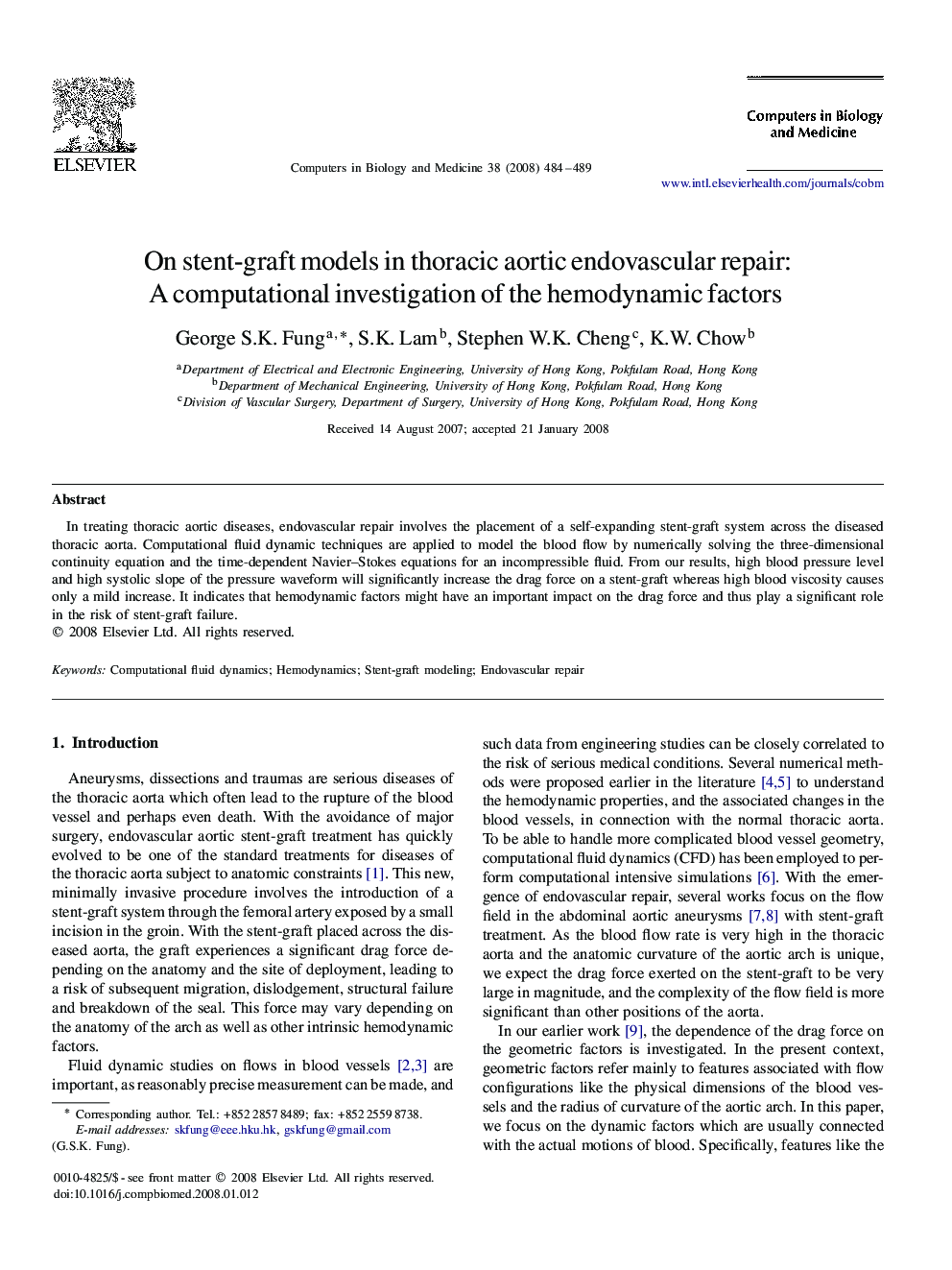| Article ID | Journal | Published Year | Pages | File Type |
|---|---|---|---|---|
| 505937 | Computers in Biology and Medicine | 2008 | 6 Pages |
Abstract
In treating thoracic aortic diseases, endovascular repair involves the placement of a self-expanding stent-graft system across the diseased thoracic aorta. Computational fluid dynamic techniques are applied to model the blood flow by numerically solving the three-dimensional continuity equation and the time-dependent Navier–Stokes equations for an incompressible fluid. From our results, high blood pressure level and high systolic slope of the pressure waveform will significantly increase the drag force on a stent-graft whereas high blood viscosity causes only a mild increase. It indicates that hemodynamic factors might have an important impact on the drag force and thus play a significant role in the risk of stent-graft failure.
Related Topics
Physical Sciences and Engineering
Computer Science
Computer Science Applications
Authors
George S.K. Fung, S.K. Lam, Stephen W.K. Cheng, K.W. Chow,
